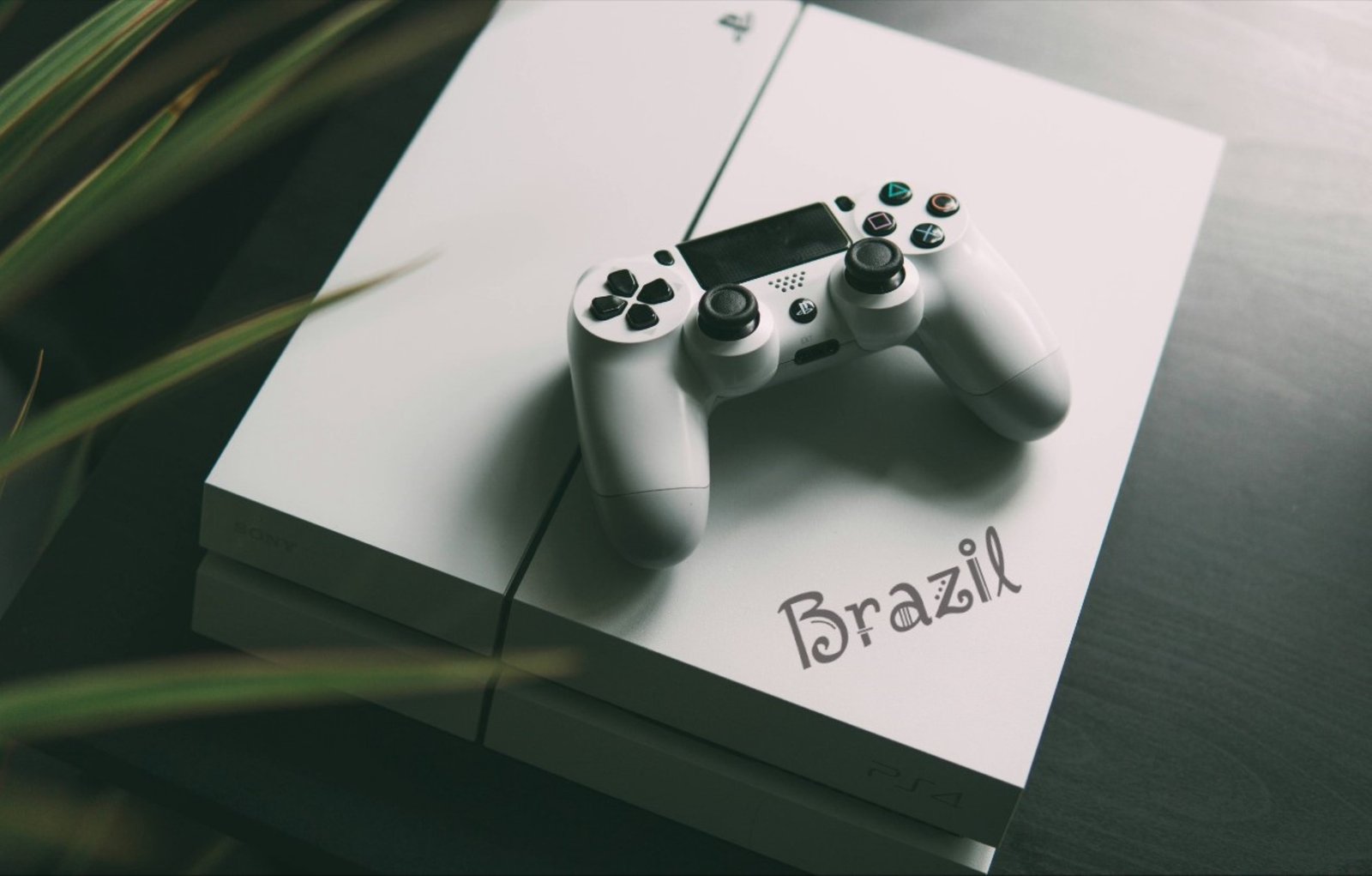
Game News Brazil
Video Game History in Brazil
The history of video games in Brazil is fascinating and unique, shaped by political, economic, and social factors. Here’s a brief overview of key moments in the history of video games in Brazil:
1.The 1980s: A Challenging Start
- 1.Political and Economic Context: During the 1980s, Brazil was under military dictatorship and had heavy import restrictions on foreign goods, including electronics. These restrictions made importing consoles like the Atari 2600 and Nintendo Entertainment System (NES) difficult.
- The Rise of Clones: Due to high taxes and trade barriers, Brazilian companies like Gradient and CCE started producing “clone” consoles of popular systems such as the Atari 2600 and NES. These clones were often cheaper and more accessible to Brazilian gamers.
- Early Gaming Culture: Despite the challenges, a gaming culture emerged around arcades and local console versions. Arcades were particularly popular in Brazil during this period, and Brazilian gamers played various imported arcade machines.
2.The 1990s: Sega vs. Nintendo
- Sega’s Dominance: During the early 1990s, Tectoy, a Brazilian company, partnered with Sega to distribute and localize Sega consoles, such as the Master System and Mega Drive (Genesis). This partnership allowed Sega to dominate the Brazilian market, where the Master System remained popular even after its global decline.
- Localization Efforts: Tectoy played a key role in localizing games for the Brazilian market, sometimes even creating exclusive content for Brazil. This included games like Monica’s Gang (Turma da Mônica), which used Brazilian comic book characters instead of the original Western characters.
- Nintendo’s Struggles: Unlike Sega, Nintendo struggled in Brazil during the 1990s. The Brazilian company Playtronic attempted to distribute Nintendo consoles, but they couldn’t keep up with Sega’s strong foothold through Tectoy.
3.The 2000s: PlayStation Takes Over
- The PlayStation Era: By the 2000s, Sony’s PlayStation 2 became the dominant console in Brazil. Despite high prices due to continued import taxes, the PS2 became extremely popular, largely because of widespread game piracy. Pirated games were cheaper and more easily accessible, allowing the console to reach a broad audience.
- Growth of Local Game Development: Around this time, Brazilian game developers began to gain more recognition, particularly in mobile and PC gaming. Companies like Hoplon Infotainment (developer of Taikodom) and Aquiris Game Studio (developer of Horizon Chase) started making a name for themselves on the international stage.
4. The 2010s: Digital Revolution and Indie Development
- Digital Distribution: The rise of digital distribution platforms like Steam and PlayStation Store helped alleviate some of the barriers to accessing games in Brazil. Gamers could now purchase games without relying on physical imports, which were heavily taxed.
- Government Policies: Despite persistent issues with high taxes, the Brazilian government has tried to support local game development through initiatives like BNDES (Brazilian Development Bank) funding for the gaming industry.
- Indie Game Scene: The 2010s saw a boom in Brazil’s indie game development scene. Games like Toren (2015) by Swordtales and Celeste (2018), co-developed by Brazilian artist Amora Bettany, achieved international recognition.
5. 2020s: Emerging as a Global Player
- Growing Market: Brazil is now one of the largest gaming markets in the world. Despite high console prices and economic challenges, the gaming community is thriving, particularly in mobile gaming, which accounts for a significant portion of Brazil’s gaming revenue.
- eSports Scene: Brazil has become a key player in the eSports industry, with strong teams in games like Counter-Strike: Global Offensive, League of Legends, and Free Fire. Brazilian players and teams are increasingly visible on the global stage.
- International Collaborations: More Brazilian game studios are collaborating with international publishers, producing games with global appeal. The Brazilian government and industry associations like Abragames (Brazilian Game Companies Association) are also working to promote the country as a hub for game development.
Conclusion
- Brazil’s video game history is marked by its resilience and creativity in the face of economic and political challenges. From clone consoles in the 1980s to becoming a major player in mobile gaming and eSports today, Brazil’s gaming culture continues to grow, with a bright future for both players and developers.
All Failed Video Games In Brazil
The history of video games in Brazil includes some notable commercial failures, often due to factors such as poor marketing, high import taxes, piracy, or competition from more popular consoles. Below are some of the most well-known failed video games or gaming consoles in Brazil:
1. Nintendo 64
- Why it failed: Despite its global popularity, the Nintendo 64 (N64) struggled in Brazil due to high import taxes and Nintendo’s late entry into the Brazilian market. By the time the N64 was released, Sony’s PlayStation was already dominating the console scene in Brazil. The N64 also had a smaller library of games compared to the PlayStation, which could be easily pirated, making it difficult for Nintendo to compete.
2. Sega Saturn
- Why it failed: After the success of the Sega Master System and Mega Drive (Genesis), many expected the Sega Saturn to perform well in Brazil. However, the console was a commercial failure globally, including in Brazil. The Saturn’s high price, complicated hardware, and lack of strong third-party support led to its downfall. In Brazil, the PlayStation’s dominance, along with the Saturn’s limited game library, led to its failure.
3. Nintendo GameCube
- Why it failed: Similar to the N64, the Nintendo GameCube failed to capture a significant market share in Brazil. The lack of third-party support, coupled with the dominance of the PlayStation 2 and its vast library of pirated games, made it hard for the GameCube to thrive. The high cost of games, limited local marketing, and competition from other consoles contributed to its poor performance.
4. 3DO Interactive Multiplayer
- Why it failed: The 3DO, developed by The 3DO Company and backed by companies like Panasonic and GoldStar, was an ambitious console with high-end features for its time. However, its price was prohibitively expensive in Brazil, and the console never gained much traction due to its lack of exclusive titles and support from developers. Piracy also made cheaper consoles more appealing to Brazilian gamers.
5. Atari Jaguar
- Why it failed: The Atari Jaguar was marketed as the first 64-bit console, but it was a commercial disaster globally, including in Brazil. Its poor game library, complicated controller, and high price led to its failure. Additionally, by the time the Jaguar was released, Sega and Nintendo had already established strong presences in Brazil, making it hard for the Jaguar to compete.
6. Microsoft Xbox (Original)
- Why it struggled: The original Xbox, launched in 2001, faced numerous challenges in Brazil. At the time, Microsoft had little brand recognition in the gaming market, and the console’s high price—due to Brazil’s heavy import taxes—made it inaccessible to most gamers. While the Xbox eventually gained traction with its later iterations (Xbox 360 and Xbox One), the original console struggled against the PlayStation 2 and GameCube.
7. Neo Geo
- Why it failed: Known for its impressive arcade-style games, the Neo Geo was too expensive for most Brazilian gamers. The console and its cartridges were priced much higher than competitors, making it a luxury item. The high cost, combined with limited game availability, led to the Neo Geo being a commercial failure in Brazil.
8. Apple Pippin
- Why it failed: Apple’s attempt to enter the video game market with the Pippin console was a global failure, and Brazil was no exception. The Pippin’s high price, lack of compelling games, and unclear marketing as both a gaming and multimedia device contributed to its quick demise. It was overshadowed by consoles like the PlayStation and Nintendo 64, which had better support and game libraries.
9. Ouya
- Why it failed: The Ouya was a crowdfunded Android-based console that promised an open platform for indie developers. While it generated initial excitement globally, the lack of quality exclusive games, technical issues, and competition from established consoles like PlayStation and Xbox led to its quick failure. In Brazil, the Ouya never gained a significant following, as the local gaming community was more focused on traditional consoles and PC gaming.
10. Philips CD-i
- Why it failed: The Philips CD-i was another attempt to create a multimedia console that blended gaming with education and entertainment. It was expensive and lacked strong gaming titles, which hurt its marketability in Brazil. With Sega and Nintendo dominating the gaming scene, the CD-i’s odd game library and poor reception made it a failure in the country.

Factors Contributing to Failures in Brazil:
1. High Import Taxes: Brazil’s high taxes on imported electronics made gaming consoles expensive, often out of reach for the average consumer. This led to poor sales for many consoles, especially those that lacked a strong local presence or cheaper alternatives.
2. Piracy: Piracy has been a long-standing issue in Brazil, particularly with PlayStation consoles. Games that were easily pirated became more popular, making it hard for other consoles that relied on original game sales to succeed.
3. Market Competition: The success of certain consoles, like the PlayStation 2, meant that many competitors were simply unable to break through due to their vast game libraries and more affordable access to pirated games.
4. Localization and Marketing: Many consoles failed to properly localize their games or market their products effectively in Brazil, allowing better-marketed competitors like Sega (through Tectoy) to dominate.
These failures highlight the challenges of entering the Brazilian gaming market, especially when faced with high taxes, piracy, and strong competition from established brands.
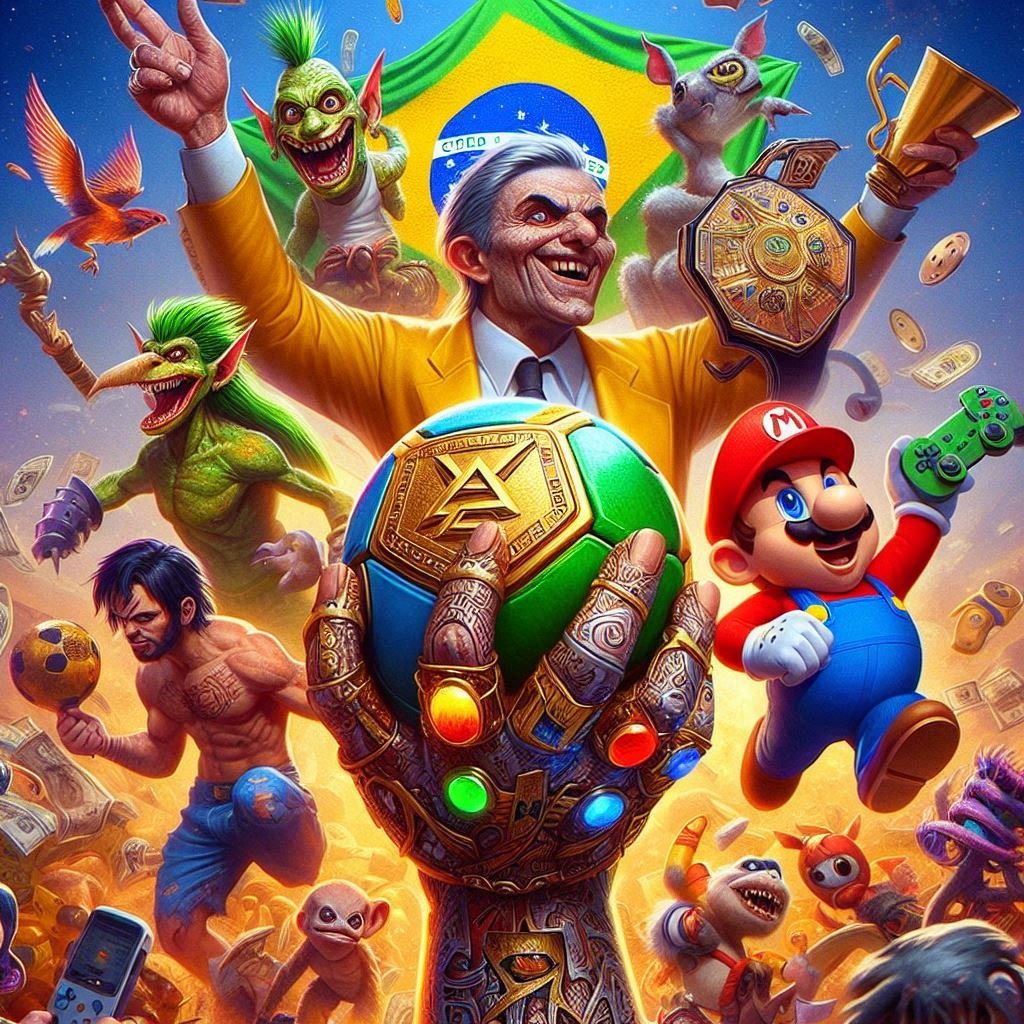
All Successful Video Games In Brazil
The success of video games in Brazil is deeply influenced by factors such as accessibility, price, local culture, and the ability to adapt to piracy and import restrictions. Over the years, several consoles and games have achieved remarkable success in the country, becoming a major part of Brazilian gaming culture. Here’s a look at some of the most successful video games and consoles in Brazil:
1. Sega Master System
- Why it succeeded: The Sega Master System became one of the most successful consoles in Brazil, largely due to a partnership between Sega and Tectoy, a Brazilian electronics company. Tectoy not only distributed and localized the console but also released exclusive content for the Brazilian market, such as games featuring popular Brazilian comic book characters like Monica’s Gang (Turma da Mônica). Even long after its global discontinuation, the Master System remained a beloved console in Brazil, with Tectoy continuing to produce it well into the 2010s.
2. Sega Mega Drive (Genesis)
- Why it succeeded: Similar to the Master System, the Sega Mega Drive (Genesis) achieved great success in Brazil thanks to Tectoy’s efforts in localizing and distributing the console. Tectoy created a strong bond with Brazilian gamers through localized marketing, exclusive content, and even customized hardware. The Mega Drive enjoyed a long life in Brazil, outlasting its competition from Nintendo consoles during the same period.
3. PlayStation 2
- Why it succeeded: The PlayStation 2 (PS2) was a massive success in Brazil, becoming one of the most popular consoles in the country’s gaming history. Despite high prices due to import taxes, the PS2 was accessible to many Brazilian gamers because of widespread game piracy, which allowed players to buy games at much lower prices. The PS2’s large library of games and its ability to play DVDs also helped boost its popularity, making it a staple in Brazilian households.
4. Counter-Strike
- Why it succeeded: Counter-Strike, particularly Counter-Strike 1.6, has been one of the most influential and successful PC games in Brazil. It became a major phenomenon in Brazilian internet cafés (locally known as “lan houses”), where multiplayer gaming boomed in the early 2000s. Counter-Strike’s accessibility, low hardware requirements, and fast-paced gameplay made it extremely popular, helping establish a strong competitive gaming scene in Brazil that persists to this day.
5. FIFA Series
- Why it succeeded: Football is an integral part of Brazilian culture, so it’s no surprise that the FIFA series has been a consistent best-seller in the country. The game’s realistic representation of football, licensed teams, and strong multiplayer modes made it hugely popular. FIFA also frequently tops the sales charts in Brazil, especially around the time of major football events like the World Cup.
6. Free Fire
- Why it succeeded: Free Fire, a mobile battle royale game developed by Garena, has been an immense success in Brazil. The game’s appeal lies in its accessibility on lower-end smartphones, which are common in Brazil, and its fast-paced action. Free Fire’s free-to-play model and its active engagement with the Brazilian gaming community through local events, collaborations, and eSports tournaments have helped it dominate the Brazilian mobile gaming market.
7. League of Legends (LoL)
- Why it succeeded: League of Legends (LoL) became incredibly popular in Brazil due to its free-to-play model, competitive nature, and active support from Riot Games, the game’s developer. The game has fostered a large community of Brazilian players and boasts one of the most successful eSports scenes in the country, with Brazilian teams regularly competing in international tournaments. LoL’s accessibility and its strong local server infrastructure further contributed to its success.
8. GTA: San Andreas
- Why it succeeded: Grand Theft Auto: San Andreas (GTA: SA) became a cultural phenomenon in Brazil, partly due to the popularity of open-world games and its relatable themes of crime and rebellion. The game’s immersive gameplay, large world, and ability to mod it led to a massive community of Brazilian fans who embraced the game. The success of pirated versions also played a role in its widespread reach.
9. Pro Evolution Soccer (PES) Series
- Why it succeeded: Pro Evolution Soccer (PES), known in some regions as Winning Eleven, has long competed with FIFA for dominance in the Brazilian market. For years, PES was the preferred football game for many Brazilian gamers, especially in the early 2000s. Its realistic gameplay, fan-made mods (which added Brazilian teams and leagues), and strong connection to local football culture helped solidify its success.
10. Mobile Legends: Bang Bang
- Why it succeeded: Mobile Legends is another mobile game that has found immense success in Brazil. Similar to Free Fire, its popularity can be attributed to its accessibility on mobile devices and its engaging multiplayer experience. The rise of mobile gaming in Brazil has given this game a solid foothold in the competitive mobile gaming scene, alongside Free Fire.
11. Minecraft
- Why it succeeded: Minecraft’s open-ended sandbox gameplay has made it one of the most popular games in Brazil. The game’s ability to run on a wide range of devices, including mobile, PC, and consoles, made it accessible to a broad audience. Its creativity-driven gameplay resonated with Brazilian gamers, leading to a strong fanbase, especially among younger players.
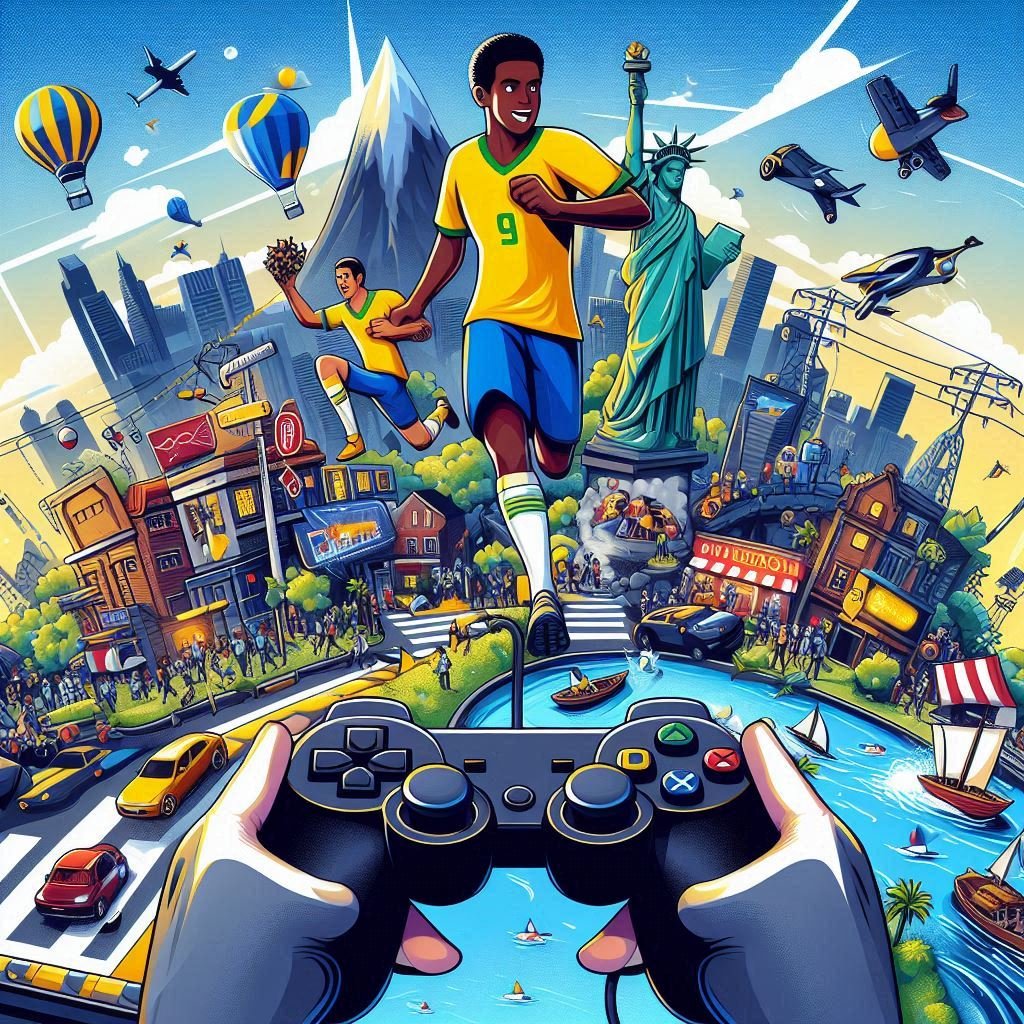
Factors Contributing to Video Game Success in Brazil:
1.Accessibility: Games that are accessible on lower-end devices or have lower hardware requirements tend to succeed in Brazil. This is especially true for mobile games like Free Fire and Mobile Legends.
2.Piracy: Historically, consoles like the PlayStation 2 and games like GTA: San Andreas succeeded due to widespread piracy, making them more affordable for Brazilian gamers who otherwise faced high prices for legal copies due to taxes and import restrictions.
3.Localization: The efforts of companies like Tectoy (with Sega consoles) and game developers who localized their content for the Brazilian market (e.g., FIFA, PES) have played a major role in the success of video games and consoles in the country.
4.Cultural Relevance: Games that align with Brazilian culture, such as football games like FIFA and PES, have always been highly successful. The connection to national interests and community-driven gameplay has boosted the appeal of such games.
5.eSports and Multiplayer Focus: Games with strong multiplayer modes or competitive gaming scenes, like Counter-Strike, League of Legends, and Free Fire, have become pillars of the Brazilian gaming landscape due to the thriving social and eSports communities.
These games and consoles have become iconic in Brazil, reflecting the unique gaming culture of the country, shaped by social, economic, and technological factors.
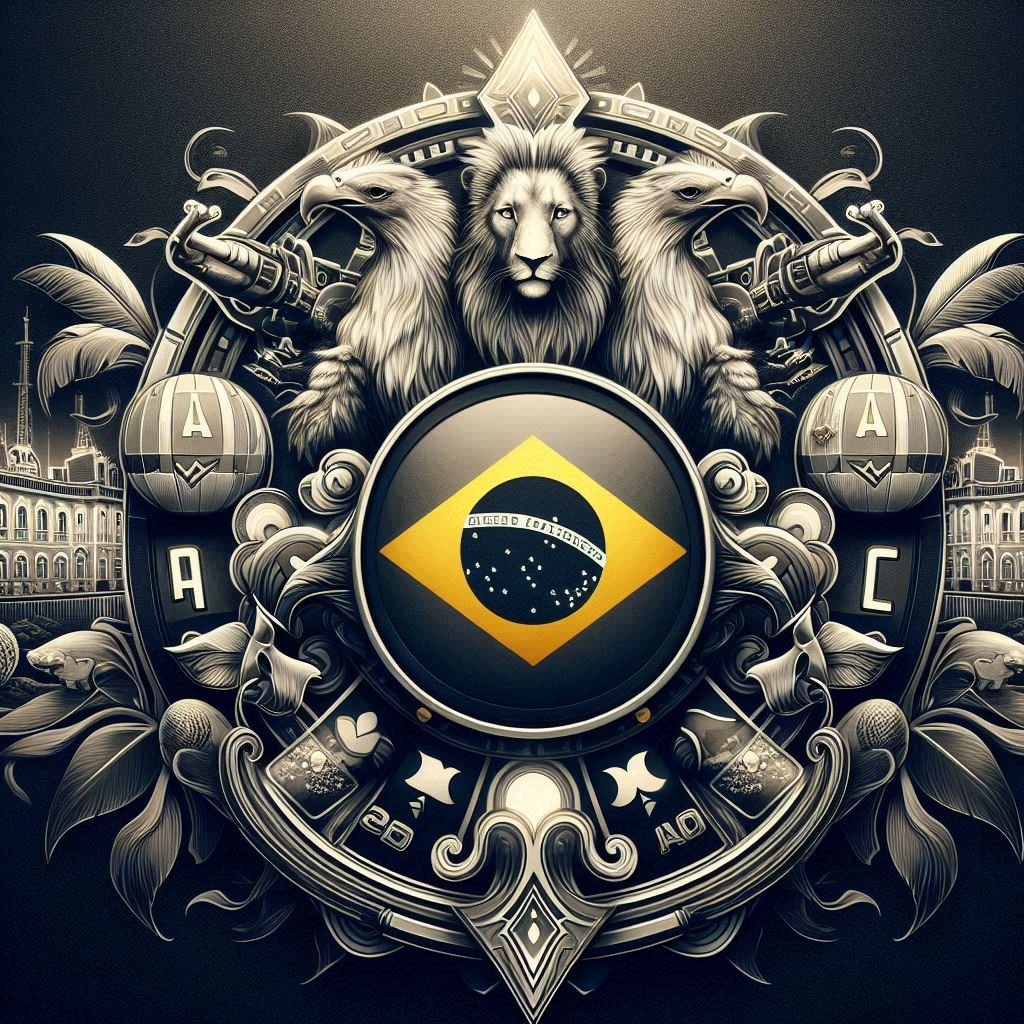
The Most Developed and Popular Video Game Company in Brazil
The most developed and popular video game company in Brazil is Aquiris Game Studio. Founded in 2007 and based in Porto Alegre, Aquiris has gained significant recognition both in Brazil and internationally. They are best known for their critically acclaimed game Horizon Chase, a retro-inspired racing game that pays homage to classic 16-bit racers like Top Gear. The game has been successful on multiple platforms, including mobile devices, consoles, and PC, and even received a console version called Horizon Chase Turbo.
Key Factors Behind Aquiris’ Success:
1.Quality of Games: Aquiris focuses on creating high-quality, visually stunning games with a nostalgic feel. Horizon Chase stands out for its polished gameplay, vibrant art style, and engaging soundtrack, which was composed by Barry Leitch, the legendary composer behind the original Top Gear soundtrack.
2.International Recognition: The studio’s ability to release games that resonate with both Brazilian and global audiences has helped Aquiris gain a strong international following. Horizon Chase Turbo has been particularly successful on PlayStation 4, Nintendo Switch, and Xbox One.
3.Partnerships and Collaborations: In 2021, Aquiris entered into a strategic partnership with Epic Games, the creators of Fortnite and the Unreal Engine. This partnership includes investment from Epic Games, helping Aquiris expand its game development efforts and gain access to cutting-edge technology, making them even more competitive on the global stage.
4.Focus on Console and Mobile Markets: Aquiris is versatile in targeting multiple platforms, from mobile to consoles and PC. This cross-platform approach has allowed their games to reach a wider audience, ensuring success across different markets.
5.Brazilian Roots, Global Appeal: While their games have international appeal, Aquiris remains proudly Brazilian, often incorporating subtle elements of Brazilian culture into their work. This dual focus has helped them build a loyal following at home while also attracting players worldwide.
Other Notable Brazilian Game Companies:
1.Wildlife Studios: Another major player in the Brazilian gaming industry, Wildlife Studios focuses on mobile games and is one of the largest mobile game developers globally. Their titles, such as Sniper 3D and Zooba, have amassed millions of downloads.
2.Hoplon Infotainment: Based in Florianópolis, Hoplon is known for developing Heavy Metal Machines, a free-to-play vehicular combat game. They focus on multiplayer online games, with a growing presence in the eSports scene.
3. Behold Studios: Known for games like Chroma Squad and Knights of Pen and Paper, Behold Studios is a popular indie developer that has gained international attention for their quirky and innovative game concepts.
Conclusion
- While there are many successful game development companies in Brazil, Aquiris Game Studio stands out as the most developed and popular, thanks to their high-quality games, international partnerships, and ability to connect with Brazilian and global gamers.
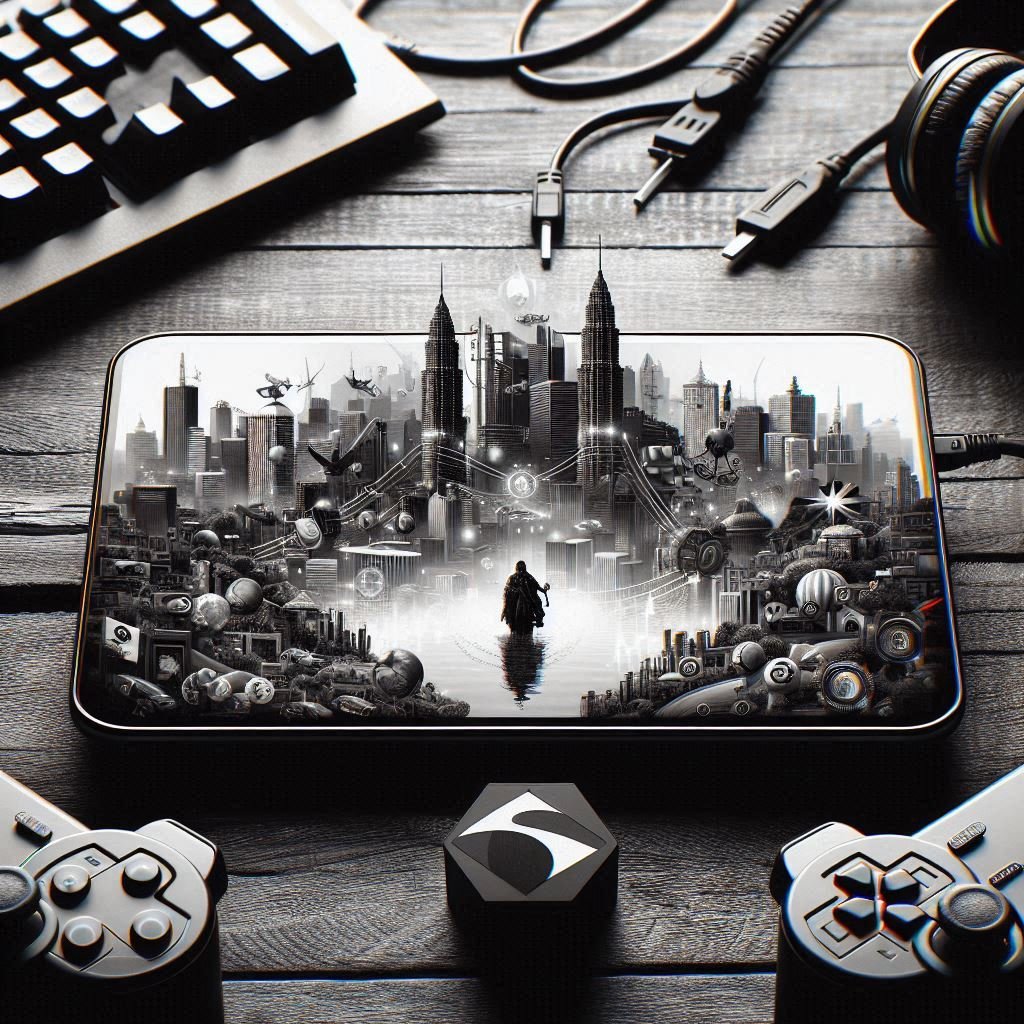
The State of Mobile Video Games in Brazil
Mobile video games have seen explosive growth in Brazil, reflecting the global trend toward mobile gaming as a dominant force in the video game industry. Brazil is now one of the largest gaming markets in the world, and mobile games have played a significant role in driving this expansion due to their accessibility, affordability, and popularity among a diverse audience. Here’s a detailed look at the state of mobile video games in Brazil:
1. Market Growth and Size
- Brazil’s gaming market is the largest in Latin America, with mobile games accounting for a major share of revenue. According to recent industry reports, over 90% of Brazilian gamers play on mobile devices, with mobile gaming generating a significant portion of the estimated $2 billion gaming market. This trend is driven by the widespread availability of affordable smartphones and the increasing penetration of high-speed mobile internet. Brazilian gamers are highly engaged, and mobile gaming is becoming the preferred platform due to the lower cost of entry compared to consoles or PCs. The free-to-play (F2P) model is particularly popular, with many games offering in-app purchases and microtransactions to monetize.
2. Popular Mobile Game Genres
In Brazil, mobile gamers enjoy a wide variety of genres, but some of the most popular include:
- Battle Royale Games: Titles like Free Fire by Garena and PUBG Mobile have immense popularity in Brazil, especially among younger players.
- Multiplayer Online Battle Arena (MOBA): Games like Mobile Legends: Bang Bang and Wild Rift (League of Legends’ mobile version) have a growing player base.
- Casual Games: Candy Crush Saga, Subway Surfers, and similar easy-to-play, free-to-download games remain popular due to their quick and accessible nature.
- RPGs and Strategy Games: Titles like Clash Royale and Genshin Impact appeal to gamers looking for deeper experiences.
- Sports Games: Soccer games such as FIFA Mobile and PES Mobile (eFootball) are huge, given Brazil’s football culture.
3. Notable Brazilian Mobile Game Developers
Brazil is home to several successful mobile game developers that are making a mark both locally and internationally:
- Wildlife Studios: One of the most prominent names in the Brazilian gaming industry, Wildlife Studios is a mobile-focused developer responsible for games like Sniper 3D, Zooba, and Tennis Clash. With millions of downloads worldwide, Wildlife has established itself as a global leader in mobile game development.
- Tapps Games: Known for its variety of casual and simulation games, Tapps has developed popular titles like Vlogger Go Viral and My Boo. Their games appeal to a broad demographic, focusing on casual fun and simple mechanics.
- Aquiris Game Studio: While better known for Horizon Chase, Aquiris has also ventured into mobile gaming with a mobile version of the game, showing how established studios can tap into the mobile market.
4. Challenges in the Brazilian Mobile Gaming Scene
Despite its rapid growth, the Brazilian mobile gaming market faces several challenges:
- Monetization and In-App Purchases: Although mobile gaming is widely popular, Brazilian players tend to be more cautious with spending money on in-app purchases, mainly due to lower average incomes and economic uncertainty.
- Localization and Payment Solutions: Successful mobile games often need to be localized for the Brazilian market, including language support and culturally relevant content. Additionally, payment systems need to accommodate local methods such as boleto bancário (bank slips) and local e-wallets, as credit card penetration is relatively low.
- Piracy and Unlicensed Downloads: Piracy remains a concern for mobile game developers in Brazil, with some players turning to unauthorized sources to access premium games for free, which cuts into developer revenues.
5. Rise of Mobile eSports
- Mobile eSports is emerging as a significant sector within Brazil’s gaming landscape. Games like Free Fire and Clash Royale have fostered thriving competitive communities. Brazil’s love for competitive gaming has led to the rise of professional eSports teams, tournaments, and sponsorships centered around mobile games. Free Fire has a massive eSports scene in Brazil, with local tournaments drawing millions of viewers and significant prize pools. This has helped solidify mobile gaming’s status as a serious form of entertainment, even for professional gamers.
6. Impact of 5G and Technological Advancements
- With the rollout of 5G in Brazil, mobile gaming is expected to see even further growth. Faster internet speeds and lower latency will allow for more seamless online multiplayer experiences, pushing the boundaries of what mobile games can offer. This could open up new opportunities for developers to create more immersive and complex mobile games.
7. Future Outlook
- The future of mobile gaming in Brazil looks promising, with projections indicating continued growth in player numbers and revenue. Developers are likely to continue experimenting with innovative monetization strategies, such as advertising and subscription models, to engage users and drive revenue in a market where traditional in-app purchases may face limitations. The arrival of new technologies like augmented reality (AR) and cloud gaming could also reshape the Brazilian mobile gaming market, offering even more immersive and accessible gaming experiences.
Conclusion
Brazil’s mobile gaming scene is thriving, supported by a large and engaged player base, successful local developers, and increasing opportunities in eSports and technological advancements. While challenges such as monetization and piracy persist, the future remains bright for the mobile gaming industry in Brazil. The continued development of the market and its international reach will likely cement Brazil’s status as a global player in the gaming world.
What is The Proportion of Video Games in Brazil
The proportion of video games in Brazil is significant, as the country has one of the largest gaming markets globally, particularly within Latin America. Here’s a breakdown of the key data related to the proportion of video games in Brazil:
1. Total Market Share: Brazil’s gaming industry is the largest in Latin America, representing approximately 47% of the region’s total gaming revenue. Globally, Brazil is ranked among the top 10 gaming markets by player count and revenue.
2. Platform Preferences:
- Mobile Gaming: Mobile games dominate the market, with over 90% of Brazilian gamers playing on mobile devices. Mobile games account for a substantial portion of Brazil’s estimated $2 billion gaming market.
- Console and PC Gaming: While mobile gaming leads, consoles and PCs still have dedicated fan bases. However, these platforms trail behind mobile due to the higher cost of entry for hardware and games. Consoles make up about 30% of the gaming market, while PC gaming contributes around 15%.
3. Revenue Contribution:
- Mobile Games: Mobile games contribute around 50% or more of total gaming revenue in Brazil, largely driven by free-to-play (F2P) games with in-app purchases.
- Console Games: Console games account for roughly 30% to 35% of the total gaming revenue.
- PC Games: PC games make up around 15% to 20% of the total revenue.
4. Player Demographics:
- The average age of gamers in Brazil is around 30 years old, with a fairly even gender distribution—approximately 47% of gamers are women. This reflects the broad appeal of video games across various age groups and demographics.
5.eSports Growth:
- Brazil has seen a significant rise in eSports, particularly in mobile games like Free Fire and Clash Royale, both of which have large competitive scenes.
In summary, mobile games dominate the video game market in Brazil, both in terms of player numbers and revenue. Console and PC gaming remain important but represent a smaller share of the overall market.